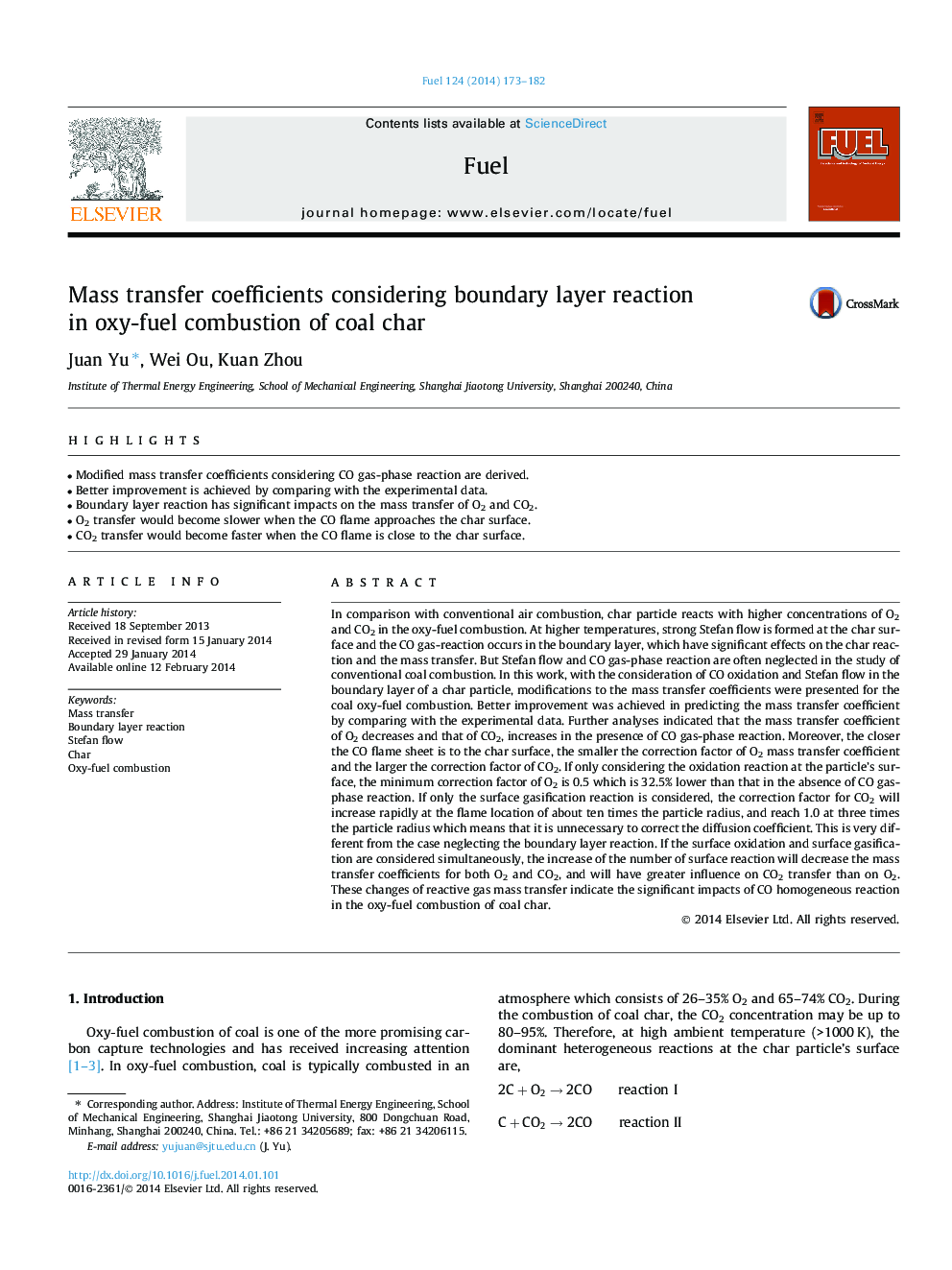| کد مقاله | کد نشریه | سال انتشار | مقاله انگلیسی | نسخه تمام متن |
|---|---|---|---|---|
| 6637951 | 461144 | 2014 | 10 صفحه PDF | دانلود رایگان |
عنوان انگلیسی مقاله ISI
Mass transfer coefficients considering boundary layer reaction in oxy-fuel combustion of coal char
ترجمه فارسی عنوان
ضرایب انتقال جرمی با توجه به واکنش لایه مرزی در احتراق سوخت اکسید زغال سنگ
دانلود مقاله + سفارش ترجمه
دانلود مقاله ISI انگلیسی
رایگان برای ایرانیان
کلمات کلیدی
موضوعات مرتبط
مهندسی و علوم پایه
مهندسی شیمی
مهندسی شیمی (عمومی)
چکیده انگلیسی
In comparison with conventional air combustion, char particle reacts with higher concentrations of O2 and CO2 in the oxy-fuel combustion. At higher temperatures, strong Stefan flow is formed at the char surface and the CO gas-reaction occurs in the boundary layer, which have significant effects on the char reaction and the mass transfer. But Stefan flow and CO gas-phase reaction are often neglected in the study of conventional coal combustion. In this work, with the consideration of CO oxidation and Stefan flow in the boundary layer of a char particle, modifications to the mass transfer coefficients were presented for the coal oxy-fuel combustion. Better improvement was achieved in predicting the mass transfer coefficient by comparing with the experimental data. Further analyses indicated that the mass transfer coefficient of O2 decreases and that of CO2, increases in the presence of CO gas-phase reaction. Moreover, the closer the CO flame sheet is to the char surface, the smaller the correction factor of O2 mass transfer coefficient and the larger the correction factor of CO2. If only considering the oxidation reaction at the particle's surface, the minimum correction factor of O2 is 0.5 which is 32.5% lower than that in the absence of CO gas-phase reaction. If only the surface gasification reaction is considered, the correction factor for CO2 will increase rapidly at the flame location of about ten times the particle radius, and reach 1.0 at three times the particle radius which means that it is unnecessary to correct the diffusion coefficient. This is very different from the case neglecting the boundary layer reaction. If the surface oxidation and surface gasification are considered simultaneously, the increase of the number of surface reaction will decrease the mass transfer coefficients for both O2 and CO2, and will have greater influence on CO2 transfer than on O2. These changes of reactive gas mass transfer indicate the significant impacts of CO homogeneous reaction in the oxy-fuel combustion of coal char.
ناشر
Database: Elsevier - ScienceDirect (ساینس دایرکت)
Journal: Fuel - Volume 124, 15 May 2014, Pages 173-182
Journal: Fuel - Volume 124, 15 May 2014, Pages 173-182
نویسندگان
Juan Yu, Wei Ou, Kuan Zhou,
